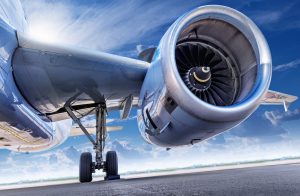As difficult as the COVID pandemic has been on Airbus and Boeing, the world’s two leading commercial aircraft manufacturers, they will manage their way through the crisis. However, many of their suppliers will remain challenged as a result.
About 20% of the aviation supply chain is at risk or being forced to exit the business, according to Richard Aboulafia, vice president of analysis at Teal Group, a Washington, D.C.-based aerospace and defense market-intelligence firm. That remains to be seen, of course, but there is no question that the aviation supplier base is weaker than it was going into the outbreak, when companies were under enormous pressure from OEM customers to expand capacity as rapidly as possible. As it stands, parts of commercial aviation may be burdened with substantial excess capacity in the near- to midterm, Aboulafia said.
Air travel demand is the lifeblood of commercial aviation, and although airlines are seeing a significant rebound in passenger bookings, Bank of America analyst Ronald Epstein expects demand for the manufacture of new aircraft to remain depressed for an extended period. A year ago, Airports Council International World had forecast passenger traffic in 2020 would reach 9.5 billion but now expects 3.6 billion fewer passengers. “If 2023 really is the year we could get back to 2019 levels [in air travel demand], that means for the next couple of years no aircraft are needed for growth,” Epstein said.
analyst Ronald Epstein expects demand for the manufacture of new aircraft to remain depressed for an extended period. A year ago, Airports Council International World had forecast passenger traffic in 2020 would reach 9.5 billion but now expects 3.6 billion fewer passengers. “If 2023 really is the year we could get back to 2019 levels [in air travel demand], that means for the next couple of years no aircraft are needed for growth,” Epstein said.
Enable Flexible Production
That may be true, but production of new airplanes will not come to a standstill, since original equipment manufacturers (OEMs) know such a move would cripple the supply chain for years. In the meantime, Airbus and Boeing are seeking the lowest sustainable production rates, impacting their suppliers’ struggle to stabilize their business.
This process will take different forms for different companies, depending on their size and what they produce. Starting at the top of the supply chain, aircraft and engine OEMs and major Tier 1 and Tier 2 companies, such as major subsystem manufacturers, are shedding noncore and underperforming assets acquired or developed over the last 20 years, according to Kevin Michaels, managing director of AeroDynamic Advisory, a leading aviation consulting firm. In the U.S., for example, U.S. Spirit Aerosystems canceled its planned acquisition of component supplier Asco, and the U.K.’s Rolls-Royce expects to sell about $2.6 billion in assets.
At the lower end of the supply chain, smaller build-to-print manufacturers have been among the hardest hit, with thousands of companies facing uncertain futures, according to Michaels. Many Tier-4 companies—suppliers of raw materials, forgings and castings, special coatings, machine-shop products, and small but essential components—will need to find new revenue streams to survive. In some cases, their ranks include sole-source vendors.
Supply Chain Resiliency
When the shakeout runs its course in the mid-2020s, the commercial aviation supply chain will look very different, with significantly fewer Tier 3 and Tier 4 companies. Tier 1s are likely to be leaner, more focused and more conservative in their technology-investment decisions.
While all players are banking on a faster recovery in passenger traffic than recent market forecasts would suggest, that is not to suggest that suppliers are at the mercy of market forces, no matter how severe.
The notion of resiliency—meaning a company’s ability to manage their business to minimize disruption and risk at the planning and execution levels—is very much within their control, said Eric Green, vice president of marketing for Dassault Systèmes DELMIA, digital manufacturing software that uses artificial intelligence, simulation and virtual reality to enable companies to manage processes to quickly respond to disruptions, competitive threats, technical challenges and new market opportunities.
“Disruptions happen in factories every day, so the question is how do you rebalance your resources to eliminate inefficiencies and stop the bleeding,” he said. “The solution is a robust factory manufacturing system that includes artificial intelligence-driven tools capable of optimizing your business. A model-based factory that allows managers to implement what-if scenarios in response to different business conditions enables such solutions.”
Except for healthcare, few industries have been more severely affected by the pandemic than commercial aviation. Traditionally, the industry has struggled under the weight of day-to-day operations. With those operations scaled back more than ever, there may be a window to reimagine what airlines, airports, and equipment suppliers can deliver to stakeholders through innovation and a renewed commitment to digitalization. Look for both in coming months.
##
Editor:
Learn how digitalization allows suppliers to align with OEM customers, and improve performance and responsiveness.